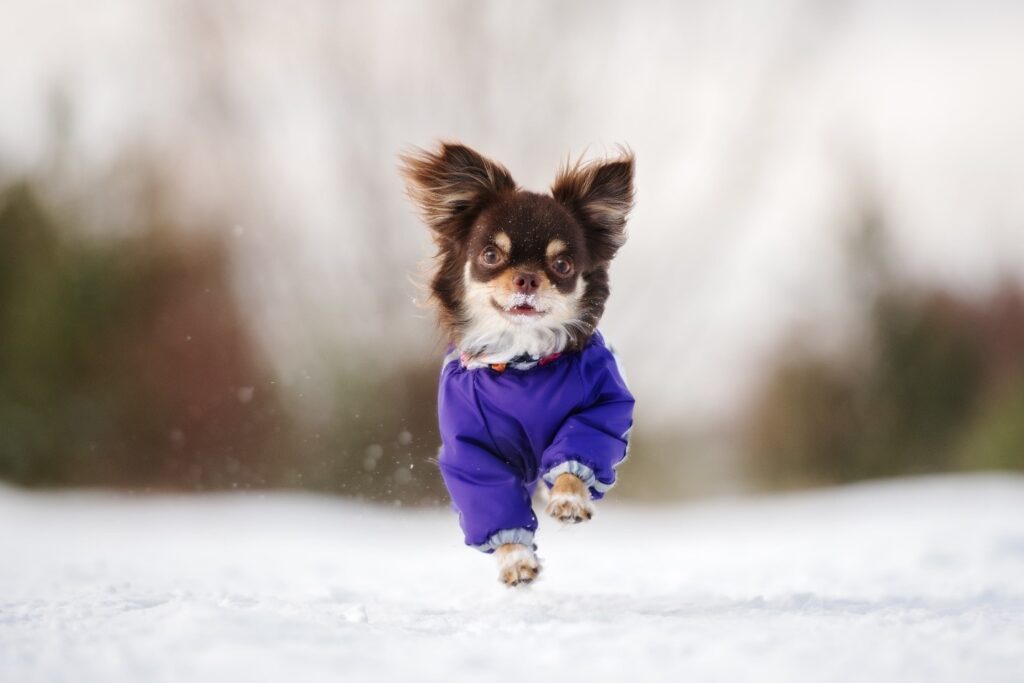When the temperature drops and winter sets in, it’s important to ensure that your furry companion stays warm and comfortable. While some dogs are naturally equipped to handle colder climates, others may need extra protection in the form of a winter coat. Choosing the right winter coat for your dog involves understanding their specific needs, which are based on factors such as breed, size, and activity level. Freshpet reviews a comprehensive guide to help you make a better-informed decision.
1. Why Dogs Need Winter Coats
Not all dogs are naturally suited for cold weather. Breeds with short hair and thin body types, or those originating from warmer climates, may struggle to maintain a healthy body temperature during chilly walks. Puppies, senior dogs, and those with certain medical conditions, such as arthritis, are also more vulnerable to the cold. A well-chosen winter coat can provide insulation, protect against wind, and even repel moisture, making winter outings safer and more enjoyable.
2. Consider Your Dog’s Breed and Coat Type
Cold-Weather Breeds
Breeds like Siberian Huskies, Alaskan Malamutes, and Saint Bernards have thick, double-layered coats that naturally insulate them against the cold. These dogs typically don’t need additional layers unless they’re in extremely harsh conditions.
Short-Haired Breeds
Dogs like Greyhounds, Dobermans, and Chihuahuas lack the dense fur required to retain heat in cold weather. For these breeds, a well-insulated coat is a must during winter.
Toy and Small Breeds
Smaller dogs like Pomeranians, Dachshunds, and Yorkies have less body mass to generate and retain heat. They often benefit from a warm, snug coat during outdoor activities.
Water-Resistant Coats for Wet Climates
Breeds like Labradors and Newfoundlands may be better equipped to handle wet conditions due to their water-resistant coats, but a waterproof outer layer can still offer added comfort during prolonged exposure to snow or rain.
3. Match the Coat to Your Dog’s Activity Level
Active Dogs
For high-energy breeds that spend a lot of time outdoors running or playing, choose a lightweight, breathable coat that offers warmth without overheating. Coats with moisture-wicking linings are particularly effective for active dogs.
Less Active Dogs
Dogs that enjoy lounging outside or are less active will need a heavier, insulated coat to effectively retain body heat. Look for coats with fleece or wool lining to maximize warmth.
Senior Dogs
Older dogs may be less active and more sensitive to the cold, especially if they have joint issues. Opt for coats with added padding or those designed with joint protection in mind, such as longer cuts that cover the hips.
4. Key Features to Look For
Material
Choose a coat made from durable, weather-resistant materials such as nylon or polyester for the outer layer, combined with a soft, insulating inner lining like fleece.
Fit
A well-fitting coat should be snug but not restrictive, allowing your dog to move freely. Measure your dog’s chest, neck, and back length to ensure a proper fit. Adjustable straps or Velcro closures can help achieve the perfect fit.
Ease of Use
Look for coats with simple designs that are easy to put on and take off. This is especially important for dogs that may be impatient or uncooperative during dressing.
Safety Features
Reflective strips or bright colors improve visibility during dark winter mornings or evenings. This is an essential feature for dogs that accompany you on walks in low-light conditions.
Additional Coverage
Some coats offer additional features like hoods, belly flaps, or leg straps. These can provide extra protection for dogs that need it, but be cautious with hoods, as not all dogs are comfortable wearing them.
5. Climate and Environment Considerations
Extreme Cold
If you live in a region with severe winters, opt for a heavy-duty coat designed for subzero temperatures. Look for options with windproof and waterproof properties.
Mild Winters
For areas with milder winters, a lightweight coat or sweater may suffice. Breathable materials are key to preventing overheating in these climates.
Wet and Snowy Conditions
Waterproof or water-resistant coats are essential for dogs that frequently encounter snow, sleet, or rain. A coat with a water-repellent outer layer will help keep your dog dry and comfortable.
6. Getting Your Dog Comfortable with a Coat
Introducing a winter coat to your dog may take some time. Start by letting your dog sniff and explore the coat before attempting to put it on. Gradually increase the amount of time they wear it indoors to help them adjust. Positive reinforcement, such as treats or praise, can make the process smoother.
7. Maintenance and Care
Winter coats can get dirty quickly, especially if your dog enjoys outdoor adventures. Choose a coat that is machine washable or easy to clean. Regular maintenance will ensure the coat stays functional and hygienic throughout the season.
8. When a Coat Isn’t Necessary
Not all dogs need a winter coat. Breeds with dense fur, such as Golden Retrievers and Bernese Mountain Dogs, often fare well in cold weather without additional layers. Monitor your dog’s behavior—if they seem comfortable and active outdoors without a coat, they may not need one.
Choosing the right winter coat for your dog is an important step in ensuring their comfort and safety during the colder months. By considering factors like breed, activity level, and climate, you can find a coat that fits your dog’s specific needs. With the right gear, winter outings can be enjoyable for both you and your furry companion, no matter the weather. By keeping these considerations in mind, you’ll be better equipped to select a winter coat that provides the perfect balance of warmth, comfort, and practicality for your beloved pet.

